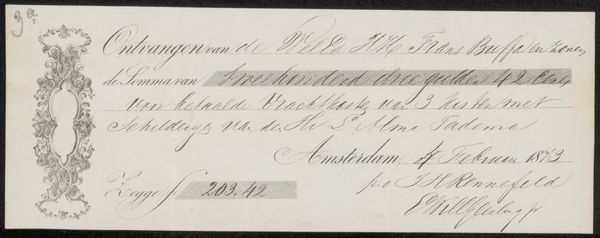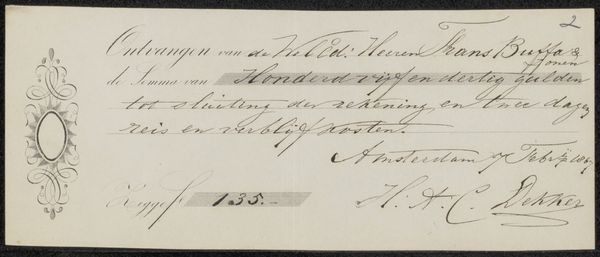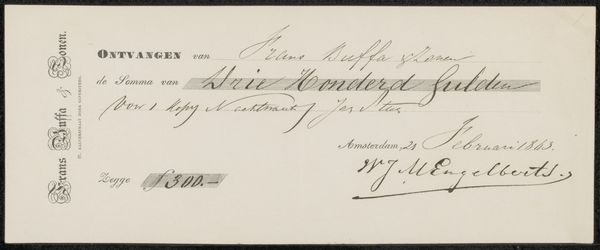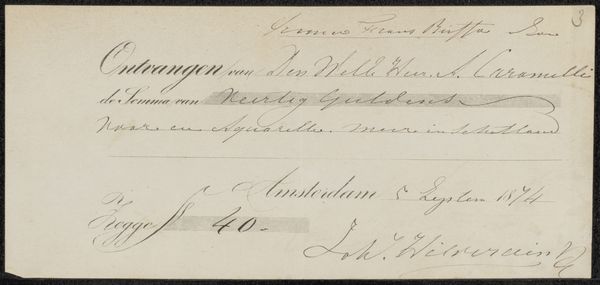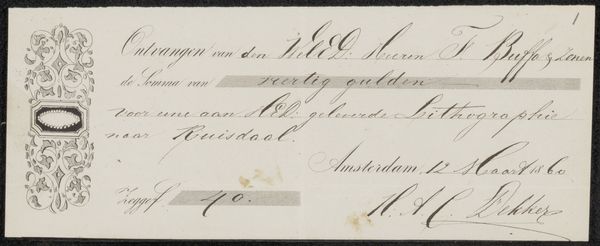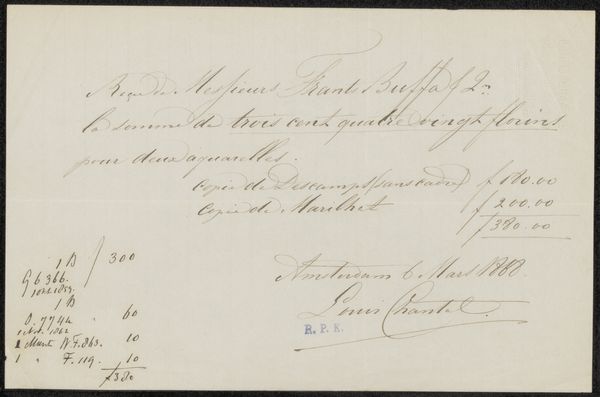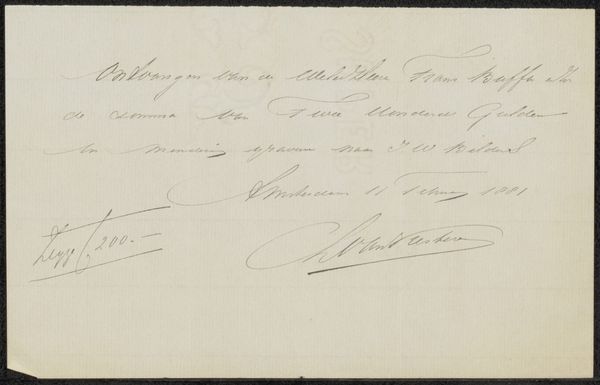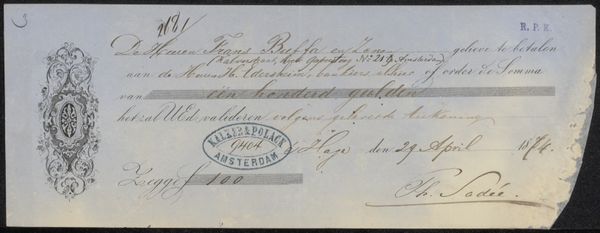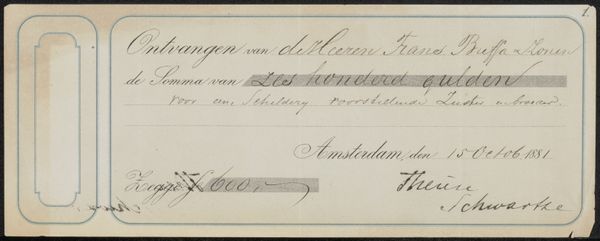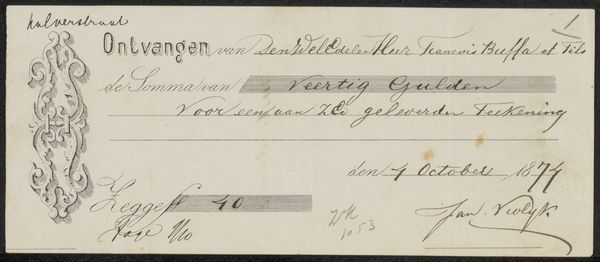
Kwitantie voor Christiaan Lodewijk van Kesteren Possibly 1880 - 1881
0:00
0:00
fransbuffaenzonen
Rijksmuseum
drawing, paper, ink
#
drawing
#
paper
#
ink
#
genre-painting
#
calligraphy
Copyright: Rijks Museum: Open Domain
Curator: Standing here before "Kwitantie voor Christiaan Lodewijk van Kesteren," tentatively dated 1880-1881 and currently held at the Rijksmuseum, I’m immediately struck by its functional elegance. It's ink on paper, attributed to Frans Buffa en Zonen. What is your initial take on this document? Editor: Oh, wow, it's so fragile! It looks like it could float away if you breathed on it too hard. It has a lovely, aged aesthetic with swirls and flourishes of cursive writing. I’m feeling like I’ve uncovered someone’s old secret! Curator: The semiotics are indeed quite evocative. The cursive script itself presents as a visual signifier of an era, possibly communicating formal, business transactions from the late 19th century. Structurally, we see the composition split neatly, with an ornamental frame on the left balancing the body of text and signature on the right. Editor: Right, there's a delicate balance! The way the ink bleeds just a little adds so much character. It doesn’t feel clinical at all. Actually it almost seems like a dance... a really organized, old-fashioned dance! What do you make of the sum marked there? 200 what? Curator: Ah, that would be 200 Dutch guilders, as indicated by the ‘f’ symbol. Its central placement certainly highlights its significance as the transactional essence of this piece. It also draws your eye towards the linear bands around the number that cut through the text. Editor: It’s curious that a simple receipt is so decorated and ornate, it could be seen as an everyday piece of art for the right eyes. And it definitely adds to the air of mystery around who Christiaan Lodewijk van Kesteren was! What was this receipt *for*? That's the story I'd love to uncover. Curator: Absolutely, the narrative thread woven within the calligraphy encourages precisely this form of speculative enquiry. It underscores how what we classify as "genre painting" may actually reside in the humblest of documents, imbued with societal values and period-specific aesthetics. Editor: Well, next time I get a receipt, I might just frame it! Perhaps I can will it into being something beautiful, though that might depend on what I bought! It's been enchanting examining such a humble yet exquisitely detailed little relic! Curator: Indeed, observing its intricate detailing has been a reminder that aesthetic appreciation lies latent, awaiting recognition, in even the most functional ephemera.
Comments
No comments
Be the first to comment and join the conversation on the ultimate creative platform.
